Knee Arthritis III-IV Degree — Total Knee Replacement and Rehabilitation: treatment in the Best Hospitals of Germany
Treatment prices are regulated by national law of the corresponding countries, but can also include additional hospital coefficients. In order to receive the individual cost calculation, please send us the request and medical records.
Treatment of Knee Arthritis in Germany
- Knee arthritis
- Arthroscopic or open surgery and transplantation of cartilage
- Total knee replacement
- Diagnosis and conservative treatment
- Endoprosthesis replacement in knee arthritis
- Endoprosthesis replacement in knee arthritis with rehabilitation
- Collagen or Polyurethan (ACTIFIT) Meniskus Implantat
- Treatment with autologous conditioned plasma (ACP)
- Stem cell therapy
- Autologous chondrocyte implantation (ACI)
- Orthopedic rehabilitation
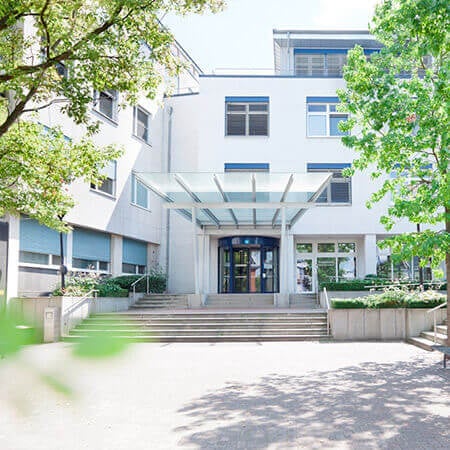
Department of Adult and Pediatric Orthopedics, Traumatology
The Department of Adult and Pediatric Orthopedics, Traumatology is part of the specialized Center for Musculoskeletal Disorders, whose medical team consists of highly qualified orthopedists, traumatologists, and spinal surgeons. The department offers modern diagnostics and treatment of the entire range of musculoskeletal diseases. The department's field of competence includes the treatment of injuries of varying severity. The therapeutic options cover both conservative measures and surgical interventions, which are mainly performed using sparing minimally invasive techniques. The treatment concept is based on the comprehensive approach – from the use of conservative methods to physiotherapeutic procedures the day after surgery.
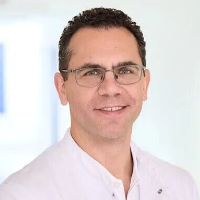


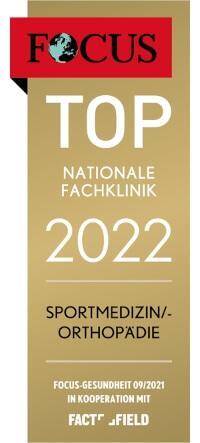
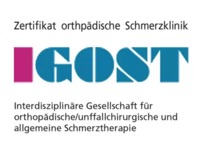
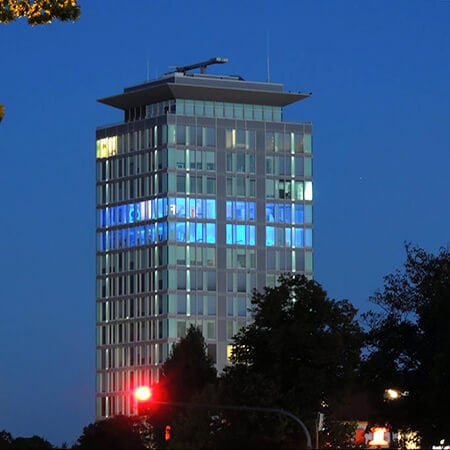
Department of Orthopedics
The Department of Orthopedics offers the comprehensive diagnostics using high-precision imaging equipment, as well as conservative and surgical treatments for all diseases, injuries and functional limitations of the musculoskeletal system. The department uses the very latest treatment methods, such as acupuncture, autohemotherapy, PRP therapy, shockwave therapy, K-Taping therapy, etc. In the field of surgical treatment, the preference is always given to minimally invasive, endoscopic and arthroscopic operations.
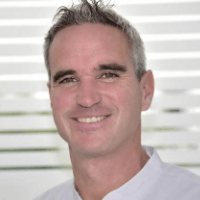


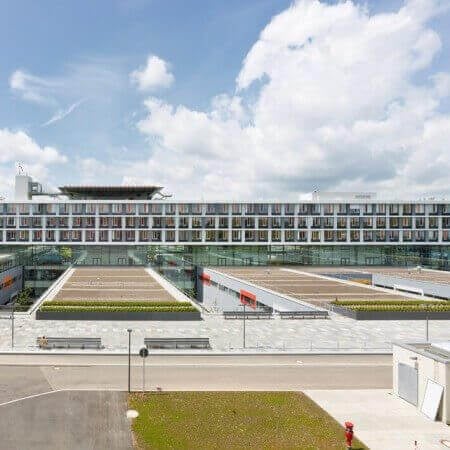
Department of Adult and Pediatric Orthopedics
The University Hospital Ulm is an advanced medical complex that provides patients with high-class medical care using the very latest scientific achievements. The medical facility has been performing successful clinical activities for more than 40 years and has long earned an excellent reputation throughout Europe. The hospital regularly demonstrates high treatment success rates, takes an active part in the training of medical students, and works tirelessly on promising research projects. The university hospital consists of 29 specialized departments and 16 scientific institutes, where more than 7,000 highly qualified employees work for the benefit of their patients. More than 55,000 inpatients and about 300,000 outpatients are treated here every year. The hospital has 1,274 beds. The medical team of the hospital is focused on providing personalized medical services using the most modern and sparing diagnostic and treatment methods.
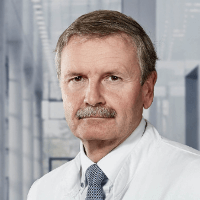





Total knee replacement ranks second frequently performed among all orthopedic surgeries. Only hip replacement surgery is performed more frequently, but knee interventions are technically more complex. To achieve good results and avoid complications, it is important to undergo replacement surgery in a good hospital. You can travel to Germany to undergo knee replacement. On our website, you can see the cost of treatment in different hospitals and book a medical care program.
Content
- Who may need total knee replacement?
- Contraindications to surgery
- What endoprostheses may be used?
- Selection of endoprosthesis
- How is surgery performed?
- How is rehabilitation carried out?
- Why is it worth having total knee replacement in Germany?
- Treatment in Germany with Booking Health
Who may need total knee replacement?
Most knee replacement surgeries are performed for gonarthrosis. It is a degenerative disease that is "wear and tear" of cartilages. They become thin, defects and cartilaginous growths appear. This is followed by subchondral bone atrophy and the formation of cysts.
Gonarthrosis affects 20% of the world's population. As the life expectancy of people increases, the prevalence of pathology increases. Joint injuries or extreme physical exertion can accelerate the development of the disease, and therefore athletes often suffer from gonarthrosis. Their disease can develop up to 40 years of age. It also progresses faster and earlier requires knee joint replacement.
In developed countries, 0.8% of people have an artificial knee joint. Some patients undergo surgery to implant two endoprostheses at once, since both knees can be destroyed by a pathological process. Although most operations are performed for gonarthrosis, there are other pathologies that can destroy the knee. Trauma, tumors, rheumatoid arthritis or aseptic necrosis of the bones of the lower extremity can be indications for replacement surgery.
Not all patients suffering from gonarthrosis need knee joint replacement. The early stages of the disease can be treated with conservative methods. In addition, there are other surgical procedures that allow getting a symptomatic effect for several years. Most of the interventions for replacement surgery are performed at stage 3 of arthrosis, when limb function is affected. Less commonly, the knee replacement is performed at stage 2 of the disease, if the patient has high requirements for the function of the lower limb, wants to lead a physically active life or suffers from pain and does not receive a sufficient effect from drug therapy.
Not all patients require total knee arthroplasty. It can also be partial (unicompartmental). In this case, doctors use semi-prostheses that replace only the medial or lateral part of the joint. The surgery for their implantation is less traumatic, it is performed through a short incision and leaves muscles and ligaments intact. Rehabilitation is much faster.
But to perform this knee surgery, a number of conditions must be met. The patient must have intact ligaments, preserved meniscus, and sufficient thickness of hyaline cartilage on the side that will not be replaced by an artificial prosthesis.
Severe gonarthrosis usually destroys the entire joint, so doctors resort to total knee replacement. In addition, this is the first choice surgery for severe rheumatoid arthritis and tumors in the knee joint – partial knee replacement cannot be performed for these pathologies.
Total recovery takes few months, but you’ll be able to walk in few days after the surgery.
Cost of total knee replacement in knee arthritis is from €11,721. Cost of total knee replacement with rehabilitation is from €15,983. You can find other prices on the Booking Health website.
The best hospitals in Germany for arthroplasty and knee rehabilitation are:
- University Hospital Rechts der Isar Munich
- Vitos Orthopedic Clinic Kassel
- University Hospital Ulm
- University Hospital Frankfurt-am-Main
- University Hospital of Ludwig Maximilian University of Munich
Contraindications to surgery
Contraindications to the knee replacement are diseases and conditions, in which the operation can be dangerous or ineffective. The main contraindications to replacement surgery include:
- Acute infection.
- Active inflammation of any localization.
- Purulent arthritis suffered during the last 6 months.
- Osteomyelitis involving the condyles of the femur or tibia (bone structures that form the knee joint).
- Diseases that make it impossible to extend the knee: fracture of the patella, damage to its ligaments, quadriceps tendon tear.
- Coarse numerous scars in the knee.
- Exacerbation of vein thrombophlebitis of the lower extremities.
- Any decompensated internal diseases.
What endoprostheses may be used?
The artificial knee joint has three components. Therefore, total endoprostheses are called three-pole. They are of three types:
- Constrained.
- Unconstrained.
- Partially constrained.
In the vast majority of cases, primary total replacement surgery is performed using unconstrained or partially constrained prostheses. The constrained ones involve preserving both cruciate ligaments. Their implantation requires the integrity of the lateral knee ligaments.
Partially constrained prostheses are used in case of impaired knee joint stability and deviated biomechanical axis of the limb. The posterior cruciate ligament can be either replaced or preserved. Depending on its condition, different types of partially constrained endoprostheses can be used.
Fully constrained artificial joints are used less frequently. They are needed in the most severe cases. These endoprostheses completely eliminate abduction and adduction of the knee joint. They are connected by a hinged, loop or other mechanism.
Selection of endoprosthesis
Primary total knee replacement involves the use of either mobile-bearing or fixed-bearing platform endoprostheses.
In young, physically active patients, preference is always given to mobile-bearing platform artificial joints. They provide more physiological movement through a combination of rotation and sliding. In addition, these types of endoprostheses are more resistant to wear and tear under load. They will last longer, so there is less risk that a second surgery will be required in the future.
At the same time, fixed-bearing platform endoprostheses have their advantages. They better compensate for the ligamentous imbalance. Such artificial joints are often implanted in elderly patients who have minimal physical activity.
Rotating hinge joints are used for knee ligament failure, extensive defects of the tibia and femur, as well as at the advanced stage of gonarthrosis, when the disease results in ankylosis – complete joint immobility. They are often resorted to during repeated replacement surgery, as well as in cases when cancer becomes an indication for knee replacement. When performing surgery in patients with oncopathology, doctors remove a significant part of the bone. They replace the defect with a graft and implant a long-stemmed endoprosthesis. Rotating hinge joints wear out faster than unconstrained and partially constrained joints.
Another type of fully constrained endoprosthesis that can be used when the knee is completely destroyed is called a pure hinge endoprosthesis. It is inferior to the rotating hinge one in terms of functional characteristics. If the rotating hinge artificial joint provides external and internal rotation of the lower leg, pure hinge joints allow only flexion and extension of the knee.
How is surgery performed?
Total replacement surgery is performed under general anesthesia or spinal anesthesia. The doctor makes an incision in the knee. He removes the patient's own joint and replaces it with the components of the artificial endoprosthesis.
In standard cases, surgery lasts 1.5-2 hours. But there are difficult situations when surgery takes more time. For example, if a patient develops a significant bone deficiency, surgeons additionally perform bone grafting, which increases the duration of the surgical intervention.
Upon completion of the surgery, the doctor sutures the wound. In the postoperative period, the patient receives antibiotics to prevent infections, anticoagulants to prevent thromboembolic complications, and painkillers.
Knee replacement in Germany is performed using computer-assisted navigation. It allows for a perfectly accurate placement of the artificial joint, with an error of up to 0.1 mm and 0.1 degrees. Doctors achieve an ideal biomechanical axis of the lower limb, which increases the life of the endoprosthesis. The risk of aseptic loosening within 8 years is reduced from 25% to 3%. Aseptic loosening is the leading cause of revision replacement surgery, which is more complex, traumatic, more expensive and provides less good functional outcomes.
How is rehabilitation carried out?
Germany is one of the world leaders in the quality of rehabilitation. The restoration of the functions of the musculoskeletal system is faster here, while the long-term functional results are much better. They provide a higher level of activity and improve the patient's quality of life.
Rehabilitation measures begin from the very first days after knee replacement, in the same hospital where the patient undergoes surgery. To reduce the risk of complications, reduce swelling, improve blood circulation, and ensure normal wound healing, physical exercises are performed while lying in bed and standing by the bed. The patient can get out of bed and walk with support the next day. A day later, the patient takes attempts to climb the stairs. The patient is taught how to sit, get up, walk, and perform elementary everyday activities so that he can take care of himself on his own throughout the entire rehabilitation period.
Other early rehabilitation options for knee replacement include:
- Physiotherapy to reduce pain, swelling and improve microcirculation.
- Passive workouts for the knee (CPM therapy – continuous passive motion) allows for a quick restoration of the range of motion in the knee.
- Kinesiology taping – bandaging with adhesive tape to support the knee and reduce swelling.
- Massage.
- Robot-assisted gait reconstruction – especially important after replacing two knees at once.
Some hospitals use fast-track rehabilitation programs. Knee replacement surgery is performed under spinal anesthesia rather than general anesthesia, which allows activating the patient earlier. He gets up and walks a few hours after surgery. The first time a person gets out of bed with the help of medical staff. In the future, the patient learns to walk on his own using crutches.
Initially, a person walks without stress on the operated limb, and later a dosed load is possible. After a while, the crutches are changed to a cane. When the full load on the limb is allowed depends on the type of endoprosthesis used and the method of its fixation.
In 2 weeks after surgery, the patient can be discharged from the hospital. The further recovery takes place in a rehabilitation center. The patient works out in the gym and the pool. He does physical exercises to strengthen the muscles of the thigh, lower leg and buttocks. The patient does active and passive muscle stretching, proprioceptive neuromuscular facilitation. Stabilization and control exercises help restore knee stability more quickly.
In the rehabilitation center, patients train their walking skills. They acquire the correct movement stereotypes, which are disrupted over a long period of disease. By the end of the rehabilitation period, the patient not only no longer needs someone's care, but can also return to an active lifestyle, perform any work, including physical labor.
Why is it worth having total knee replacement in Germany?
Germany is distinguished by advanced medicine and high quality of patient rehabilitation. Surgery here is safer and gives reliable long-term results. The high quality of the endoprostheses used ensures a low frequency of revision surgery for artificial joint replacement surgery.
Benefits of German medicine:
- Hospitals for knee and rehabilitation centers are equipped with state-of-the-art equipment.
- Total replacement surgery is performed using computer-assisted navigation. The prosthesis is implanted very accurately, so it will last for many years.
- High-quality total endoprostheses with high rates of 20-year survival are used.
- Affordable cost of treatment: in Germany it is lower than in many developed countries.
- Fast-track rehabilitation programs allow reducing the risk of complications and shortening hospital stays.
As a result of treatment and rehabilitation in Germany, the patient can fully recover his level of physical activity and get rid of pain.
Treatment in Germany with Booking Health
Please use the services of Booking Health to undergo knee replacement in Germany. On our website, you can see the cost of treatment in different German hospitals, compare prices and book a medical care program at an affordable price.
Please contact the Booking Health specialists to travel for treatment in Germany. Here are our benefits for you:
- We will choose the best orthopedic hospital whose doctors specialize in knee replacement surgery.
- We will help you overcome the language barrier, establish communication with the German hospital and your attending physician.
- We will reduce the waiting time for the start of the medical care program and book a doctor's appointment on the most suitable dates.
- We will reduce the price. The cost of treatment in Germany will be decreased due to the lack of additional coefficients for foreign patients.
- We will take care of all organizational issues: documents for entering the country, transfer from the airport, hotel, interpreter, etc.
- We will elaborate a medical care program and translate medical documents into German. You do not have to repeat previously performed diagnostic procedures.
- We will provide communication with the hospital after the completion of treatment in Germany.
- We organize additional medical examinations, treatment in Germany or rehabilitation, if necessary.
- We will buy medicines in Germany and forward them to your native country.
- We will help you keep in touch with the hospital after the completion of treatment in Germany.
Booking Health makes treatment in Germany easier, faster and cheaper. We will fully organize your trip, and you will only have to focus on restoring your health.
Authors: Dr. Vadim Zhiliuk, Dr. Sergey Pashchenko

